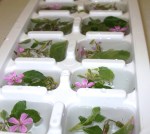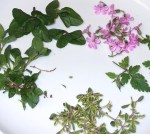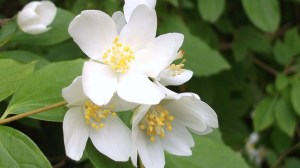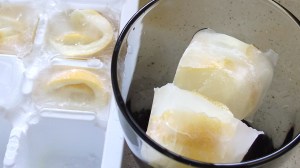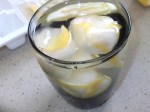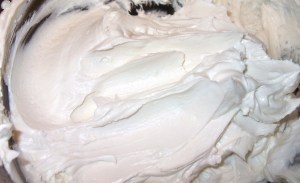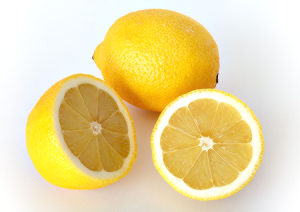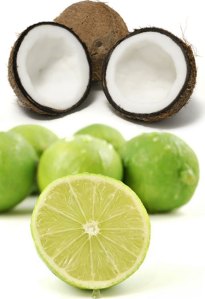How to Burn Resin Incense – In General
There are many methods and techniques for buring resin incense, they depend and vary based on the type of charcoal burner you are using, this is just one of many techniques. Resins will not burn on their own, they require charcoal and a heat resistant burner such as soapstone or metal. For beginners, I recommend starting the process outdoors, or on the stove top under the exhaust fan to control the amount of incense fragrance being released.
1. Fill burner 3/4 full with ash, sand, salt or aquarium rocks to absorb some of the heat, then place burner on a protective surface like a nonflammable, heat resistant coaster. The charcoal and the burner will get very hot, do not place burner directly on counterop, glass or wooden table because the burner may result in damage to your counterop. Do not handle or touch the burner while the charcoal is burning, you will burn your hands.
2. Holding the charcoal with a pair of tongs or tweezers, light one end of charcoal. You will start to see a spark travel across the surface of the tablet. The process of preparring the charcoal and allowing it the burn all the way through can take 5-10 minutes, it is easiest to set the charcoal down on a charcoal burner with a mesh screen top, or into the burner on top of the nonflammable material of your choice, while this process takes place. Once the spark has traversed the entire charcoal and the briquette is glowing hot (you can tell by blowing in it a little) and the surface of the charcoal is covered in a layer of white ash, it’s ready to use.
*If using ash, one method has described to now bury or cover the charcoal under a layer of ash to reduce the heat and then placing the resin on top of the ash rather than directly on the hot charcoal. This will reduce the heat and allow the resin to melt and smolder more slowly to produce a more pure fragrance. I have tried this method and I like it, you can experiment for yourself. It is similar to a Japanese method.
3. Start by adding a very small amount of resin either directly on top of the charcoal or on top of the ash. Adding too much resin incense can put off too much smoke if you are not careful. You can add the small resin tears or powder, or both. I like to use a metal spoon to spoon my resin onto the hot charcoal. Then add more resin as desired, and repeat as necessary. The tablet should burn for about an hour.
4. When finished, allow the charcoal to completely burn out in the burner, and allow it to come to a complete cool before discarding. When in doubt, dowse it with water.
5. Practice makes perfect. Burning resin incense is an art and if at first you don’t get the results you expected keep trying – you’ll get the knack for it. I also suggest watching some videos on YouTube that demonstrate various methods for buring resin incense.
Caution HOT
At no time should you touch the charcoal briquette once lit. It is very hot and it will burn you. If you need to move the charcoal once lit, us tongs, or a metal spoon or fork. Be cautious when touching or moving the soapstone burning during or after such time as the charcoal has been burning on it. Be aware of how hot the bottom of the burner is getting so that it does not damage the surface it is on. If the bottom is hot, you need to add more non-flammable material such as rice, rocks or sand. Or put a barrier between the bottom of the burner and your surface.

FRANKINCENSE TEARS 100% Pure & Natural, Wild Harvested
Scientific Name: Boswellia sacra Origin: Somaliland Form: Resin tears
Frankincense is sometimes known by its older name ‘olibanum’, and it comes from Boswellia sacra plant in Somalia. Its one of the most commonly used resin incenses, and it is burned for purification, spirituality and is associated with the Sun.
Wild Harvested from Egypt. Ethically wild harvested when not certified organic. Processed by a Certified organic processor through Oregon Tilth which is fully accredited with the USDA National Organic Program.
What is Wild Harvested?
Our first choice is always certified organic, and if organic is not available we will choose a wildharvested or “cultivated without chemicals” variety. If wild gathered material is harvested then each gatherer must fill out a “wild take audit” to ensure that indigenous populations have only undergone a 10% take and that they have not been over-picked, or disrespected. All materials from overseas are scrutinized for soil, water, and fertilizer quality and we request that materials are grown in regions or provinces that have a stellar reputation for their cleanliness and environmental purity.

MYRRH 100% Pure & Natural, Wild Harvested
Scientific Name: Commiphora myrrha Origin: Somaliland Form: Resin pieces with some organic debris (bark, stem pieces)
An aromatic gum resin obtained from several trees and shrubs of the genus Commiphora of India, Arabia, and Eastern Africa, used in perfume and as incense.
Wild Harvested from Somaliland. Ethically wild harvested when not certified organic. Processed by a Certified organic processor through Oregon Tilth which is fully accredited with the USDA National Organic Program.
What is Wild Harvested?
Our first choice is always certified organic, and if organic is not available we will choose a wildharvested or “cultivated without chemicals” variety. If wild gathered material is harvested then each gatherer must fill out a “wild take audit” to ensure that indigenous populations have only undergone a 10% take and that they have not been over-picked, or disrespected. All materials from overseas are scrutinized for soil, water, and fertilizer quality and we request that materials are grown in regions or provinces that have a stellar reputation for their cleanliness and environmental purity.

FRANKINCENSE & MYRRH MIXTURE 1/4 Myrrh to 3/4 Frankincense Mixture (Pre-mixed together) 100% Pure & Natural, Wild Harvested
Origin: Somaliland
Wild Harvested. Ethically wild harvested when not certified organic. Processed by a Certified organic processor through Oregon Tilth which is fully accredited with the USDA National Organic Program.
What is Wild Harvested?
Our first choice is always certified organic, and if organic is not available we will choose a wildharvested or “cultivated without chemicals” variety. If wild gathered material is harvested then each gatherer must fill out a “wild take audit” to ensure that indigenous populations have only undergone a 10% take and that they have not been over-picked, or disrespected. All materials from overseas are scrutinized for soil, water, and fertilizer quality and we request that materials are grown in regions or provinces that have a stellar reputation for their cleanliness and environmental purity.

COPAL BLANCO 100% Pure & Natural, Wild Harvested
Scientific Name: Hymenaea courbaril Origin: Indonesia Form: Resin pieces with some powder
Copal has a gentle, soft and warming fragrance. To the ancient Mayans, the Divine god of the earth extracted copal resin from the tree of life and gave it to humans as a gift. Copal is said to be cleansing and aid in mental and spiritual endeavors. It opens the soul and stimulates creativity and imagination.
Wild Harvested from Indonesia. Ethically wild harvested when not certified organic. Processed by a Certified organic processor through Oregon Tilth which is fully accredited with the USDA National Organic Program.
What is Wild Harvested?
Our first choice is always certified organic, and if organic is not available we will choose a wildharvested or “cultivated without chemicals” variety. If wild gathered material is harvested then each gatherer must fill out a “wild take audit” to ensure that indigenous populations have only undergone a 10% take and that they have not been over-picked, or disrespected. All materials from overseas are scrutinized for soil, water, and fertilizer quality and we request that materials are grown in regions or provinces that have a stellar reputation for their cleanliness and environmental purity.

MAYAN COPAL 100% Pure & Natural
Scientific name: Copaifera officinalis Origin: Mexico Form: Resin pieces with powder Other names: Mexican Dark Copal, Brown Copal, Black Mayan Copal, Obsidian Copal Uses: Grounding, attraction, evocation, happiness, celebration Associations: Venus, Earth Aroma: Smooth, warm, earthy and sweet
Copal is sacred to the indigenous cultures of the Central and South Americas. It is burned year round in the churches in Mexico, but is best known for its use in the homes during Day of the Dead. It is said that the familiar scent of Copal helps the souls find their way back during their annual visit home.
The various Copal resins of Mexico and the Americas are closely related to the Copals of Africa and the Damars of India and Indonesia. The American Copals generally have a sweeter aroma.

DRAGON’S BLOOD 100% Pure & Natural Resin. Wild Harvested.
Scientific Name: Daemonorops draco Origin: Indonesia Form: Resin pieces with some powder
100% Pure & Natural. No added fragrances or fillers. Wild Harvested in Indonesia. Ethically wild harvested when not certified organic. Processed by a Certified organic processor through Oregon Tilth which is fully accredited with the USDA National Organic Program. This is pure, natural Dragon’s Blood resin, free of any synthetic additives. This product has been lab tested for it’s purity.
What is Wild Harvested?
Our first choice is always certified organic, and if organic is not available we will choose a wildharvested or “cultivated without chemicals” variety. If wild gathered material is harvested then each gatherer must fill out a “wild take audit” to ensure that indigenous populations have only undergone a 10% take and that they have not been over-picked, or disrespected. All materials from overseas are scrutinized for soil, water, and fertilizer quality and we request that materials are grown in regions or provinces that have a stellar reputation for their cleanliness and environmental purity.
History of Dragon’s Blood Resin
Dracaena Draco is a giant tree of the East Indies and Canary Islands, and shares with the baobab tree the distinction of being the oldest living representative of the vegetable kingdom, being much reverenced by the Guanches of the Canaries, who use its product for embalming in the fashion of the Egyptians. The long, slender stems of the genus are flexible, and the older trees develop climbing propensities. The leaves have prickly stalks which often grow into long tails and the bark is provided with many hundreds of flattened spines. The berries are about the size of a cherry, and pointed. When ripe they are covered with a reddish, resinous substance which is separated in several ways, the most satisfactory being by steaming, or by shaking or rubbing in coarse, canvas bags. An inferior kind is obtained by boiling the fruits to obtain a decoction after they have undergone the second process. The product may come to market in beads, joined as if forming a necklace, and covered with leaves (Tear Dragon’s Blood), or in small, round sticks about 18 inches long, packed in leaves and strips of cane. Other varieties are found in irregular lumps, or in a reddish powder. They are known as lump, stick, reed, tear, or saucer Dragon’s Blood.
Dragon`s Blood Resin is used for increased power, purification, protection, consecration, and the development of strong ritual energy.
Uses: It is used as a colouring matter for varnishes, tooth-pastes, tinctures, plasters, for dyeing horn to imitate tortoiseshell, etc. It is very brittle, and breaks with an irregular, resinous fracture, is bright red and glossy inside, and darker red sometimes powdered with crimson, externally. Small, thin pieces are transparent.

MOROCCAN ROSE Resin Incense mixed with Natural Essential Oils
Form: Resin pieces with some powder
The radiance and grace of the sweet floral fragrance of Moroccan Rose inspires poets, lovers and friends. This special resin is more expensive then most others but well worth it. Sprinkle just a pinch on burning charcoal to unleash its exotic, deep fragrance.

CELTIC BLEND Resin Incense mixed with Natural Essential Oils
Form: small resin pieces
Celtic Blend is a blend of multi-colored frankincense, myrrh, benzoin, & lavender. Used in sacred, protection, and purifying rituals.

FOREST BLEND Resin Incense mixed with Natural Essential Oils
Form: resin pieces
Forest Blend Aromatic Resin is the closest scent to the earth! This earthy resin has a light, sweet pine aroma with woodsy and earthy undertones that brings back memories of cool nights in the woods. Forest Blend is infused with natural oils and a variety of earthy resins to give it it’s natural piney woodsy aroma.

EGYPTIAN GARDENIA Resin Incense mixed with Natural Essential Oils
Form: resin pieces with some powder
The golden nuggets of this unique resin incense contain the sweet and delicate scent of Gardenia. Timeless and heavenly, this Egyptian Gardenia resin is a special blend of frankincense and exotic floral oils. This special resin is more expensive then most others but well worth it.

GLORIA Resin Incense mixed with Natural Essential Oils
Form: resin pieces
A traditional blend of Frankincense, Dark Copal and other resins and oils that creates a deep, orthodox style church incense. The smoke from this incense is graced with a hint of floral sweetness. Perfect for religious ceremonies, contemplation or just to create pleasant, relaxing atmospheres.

THREE CROWNS Resin Incense mixed with Natural Essential Oils
Form: small resin pieces
Three Crowns incense resin is a blend of Frankincense, Myrrh, Red and Black Benzoin. It is used for protection, spirituality and prosperity.

NILE TEMPLE Resin Incense mixed with Natural Essential Oils
Form: resin pieces with some powder
An exceptional blend of traditional resins and aromatic oils with a light and sweet floral blend.

GUGGUL GUM Certified Organic – 100% Natural
Certified Organic Scientific Name: Commiphora mukul Origin: India Form: resin pieces with small amounts of organic debris (bark, stem pieces, dried grass)
Certified organic processor through Oregon Tilth which is fully accredited with the USDA National Organic Program.
Guggul Gum is also known as- Commiphora mukul, Guggulipid, Indian Bedellium, and Guggulow.
Guggul, the commiphora mukul, is a small thorny tree that is native to the Middle East and the Indian plains. Generally leafless, the tree exudes a thick, sticky resin that has been used in Ayurvedic medicine for centuries to treat arthritis, acne, inflammation, obesity and ‘blood fat’. Guggul, whose Sanskrit name means “one that protects against diseases”, has written historical information about it going back to 1000 B.C.E. It was used at that time for “clearing the coating and obstruction of channels”. It was also used for healing bone fractures, inflammation, arthritis, cardiovascular conditions, obesity and lipid disorders. Research published in 1966 in India done on guggul gum concluded that it had positive effects on disorders involving lipid metabolism and had an intrinsic ability to help lower serum cholesterol. As of 1988 it has been available on the market in India as a hypolipidemic agent. Guggulipids and guggulsterones derived from the resinous gum are the most widely used medications for treating high cholesterol in India, where most research has been done on guggul. The gum exuded by the guggul tree is similar to myrrh, and has been used traditionally in the same ways as myrrh.

OPOPANAX (SWEET MYRRH) 100% Natural – Wild Harvested
Botanical name: ommiphora sp. Origin-Africa Part Used: Concrete juice from the base of stem. Form: resin pieces with small amounts of organic debris (bark, stem pieces)
A perennial, with a thick, fleshy root, yellowish in color. It has a branching stem growing about 1 to 3 feet high, thick and rough near the base. The oleo resin is procured by cutting into the stem at the base. The juice that exudes, when sun-dried, forms the Opoponax of commerce. Color, reddish-yellow, with whitish specks on the outside, paler inside. Odor, peculiar, strongly unpleasant. Taste, acrid and bitter. It is inflammable, burning brightly.
Ethically wild harvested when not certified organic. Processed by a Certified organic processor through Oregon Tilth which is fully accredited with the USDA National Organic Program.
What is Wild Harvested?
Our first choice is always certified organic, and if organic is not available we will choose a wildharvested or “cultivated without chemicals” variety. If wild gathered material is harvested then each gatherer must fill out a “wild take audit” to ensure that indigenous populations have only undergone a 10% take and that they have not been over-picked, or disrespected. All materials from overseas are scrutinized for soil, water, and fertilizer quality and we request that materials are grown in regions or provinces that have a stellar reputation for their cleanliness and environmental purity.

Basilica Resin blend mixed with Aromatic Oils
A very traditional resin blend based upon an ancient biblical recipe. Premium quality frankincense is blended with two other resins and fine aromatic oils to produce an outstanding orthodox incense with a distinctive citrus note. A fragrance that is deep, bright and filled with an aura that invokes profound contemplation and solemn moods of prayer and peace.

Melleray Blend Resin blend mixed with Aromatic Oils
A traditional resin blend of 5 or 6 ingredients according to each formula requirement. The incense texture is a combination of larger and smaller beads of frankincense, a measure of powdered material and bits of aromatic elements. This insures that the incense begins burning at once, when placed upon the live coals of charcoal, and continues to send its mild fragrant smoke for an extended period without melting into gum, which smothers the fire in the censor.

Heavenly Devotion Resin blend mixed with Essential Oils
Premium quality frankincense is blended with other resins and fine aromatic oils to produce an outstanding orthodox incense. A fragrance that is deep, bright and filled with an aura that invokes profound contemplation and solemn moods of prayer and peace.
Images are Copyrighted
All images are the exclusive property of Soul Niche and are protected under the United States and International Copyright laws. The images may not be reproduced, copied, transmitted or manipulated without the written permission of Soul Niche.
Use of any image without prior written authorization is a violation of the United States and International Copyright laws. All images are copyrighted © 2011-2012 Soul Niche. Soul Niche will take legal action and offenders will be prosecuted.
Information provided by Nikki of Soul Niche for purchase click here




















